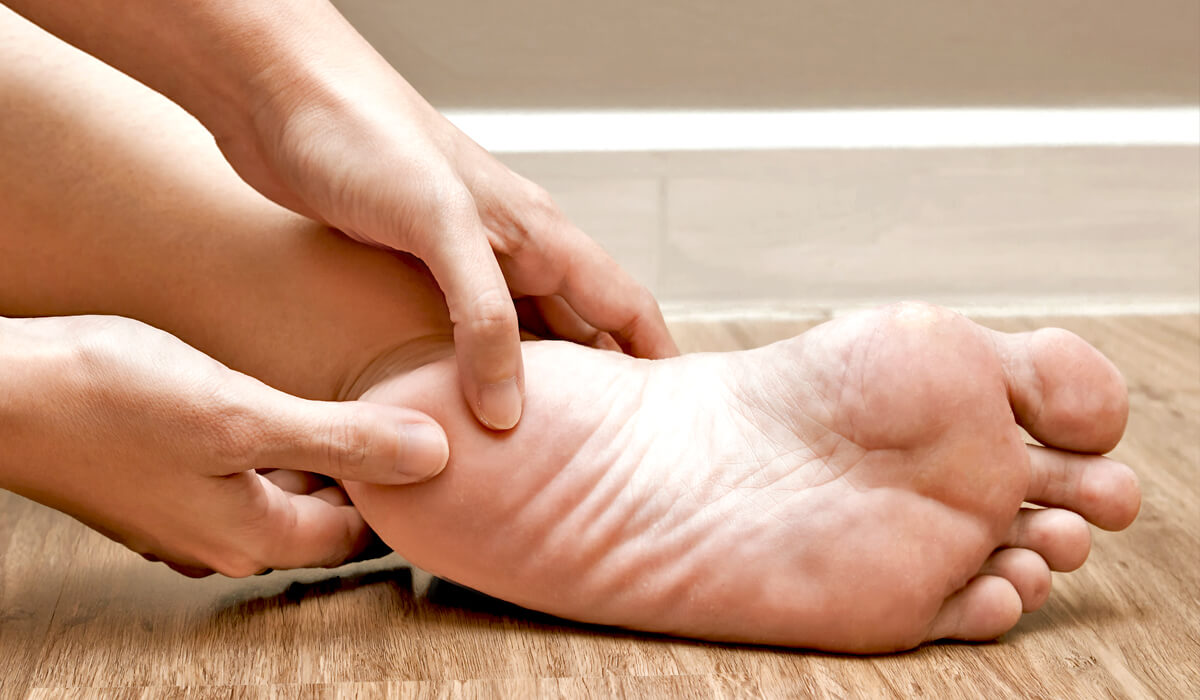Foot and ankle pain can quite literally stop us in our tracks. With ankle support, your feet carry around all of your body weight every day. So life can become pretty challenging when pain keeps you from putting one foot in front of the other.
Read on to learn some of the most common conditions and injuries that cause foot and ankle pain and when you should see a doctor for treatment.

What are the most common causes of foot and ankle pain?
Foot and ankle pain can be caused by everyday injuries (like stubbing your toe or falling down the stairs). It can also develop over time due to overuse from sports or other physical activities. Shoes that are too tight or don’t fit properly can also cause pain.
The most common injuries that cause foot and ankle pain include:
- Foot burns
- Blisters
- Bone spurs
- Stubbed toes
- Foot fractures (broken bones in the foot)
- Foot sprains
- Running injuries
- Sprained ankles
- Strained ankles
- Diabetic foot ulcers
- Achilles tendonitis
Learn How to Choose the Right Athletic Shoes
Certain diseases and medical conditions can also be to blame for foot and ankle pain, including:
- Arthritis
- Chronic foot pain
- Bunions
- Charcot foot
- Corns
- Gout
- Numbness in the foot, including diabetic neuropathy
- Plantar fasciitis
- Hammertoe
- Bursitis
- Metatarsalgia
- Morton’s neuroma
- Drop foot, flat foot, and high-arched feet
While foot and ankle pain can happen at any age, some conditions and injuries are more prevalent in specific age groups:
- Babies and kids: Conditions that commonly impact kids include toe walking, out-toeing, flatfeet, warts, athlete’s foot, or sports-related injuries
- Adults: In addition to the conditions listed above, adults can also experience heel pain, fungal and deformed toenails, ingrown toenails, corns, calluses, hammertoes, bunions, and diabetic foot concerns
- Seniors: The conditions that impact seniors the most are toenail changes, dry and cracking skin, diabetic foot concerns, corns, calluses, hammertoes, and bunions
Can you treat foot and ankle pain at home?
Depending on the severity of your condition or injury, you may be able to treat foot or ankle pain with at-home remedies, including:
- Icing the area after an injury
- Foot massage
- Topical cream
- Acetaminophen (Tylenol)
- NSAIDs (ibuprofin, naproxen)
- Orthotics (footpad or heel insert)
- Wearing a brace
When to see a doctor about your foot or ankle pain
If at-home remedies aren’t helping your foot or ankle pain or it doesn’t seem to be getting better, you may need to have a podiatrist take a look to diagnose the problem.
A podiatrist is a doctor who specializes in problems of the feet and ankles. They usually have a “DPM” (doctor of podiatric medicine) after their name instead of the “MD” (medical doctor) that you might see with other types of doctors.
Podiatrists can reset broken bones, prescribe medication, order lab tests or screens, and perform surgery.
You’ll want to see a podiatrist for your foot or ankle pain if:
- You have diabetes
- You don’t know the cause of your pain
- Your pain doesn’t improve after several weeks
- You have pain that affects both of your feet or both of your ankles
- You experience tingling, burning, or numbness
- You notice swelling after several days
Depending on what they find in their examination, your podiatrist will likely recommend non-surgical treatments at first. These can include:
- Physical therapy
- COX-2 inhibitor (Celebrex)
- Nerve pain medication
- Nerve block injection
- Corticosteroids
- Cutting or freezing off corns, calluses, or warts
Dr. Marsh can help with your foot or ankle pain
Don’t wait to see a podiatrist about your foot or ankle pain. Logansport Memorial Hospital’s Foot and Ankle Center team has the training and expertise needed to help you get back on your feet.
Our full-service podiatrist, Dr. Scott Marsh, DPM, FACFAS, can help manage your condition through medical treatments, physical therapy, custom orthotic inserts, and—if necessary—surgical intervention.
Dr. Marsh is board-certified in rearfoot reconstruction and ankle surgery, enabling him to provide total ankle replacement when needed.
You might also like:




